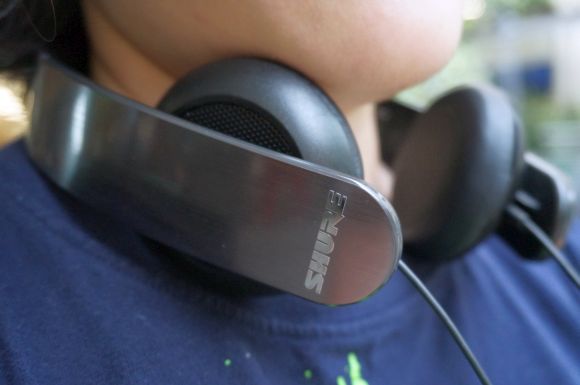
Shure SRH 144 shown here. The SRH 145 has a similar design but a different colour
Shure is a brand more known for their impressive microphones and large scale audio setups, but not too many people are aware that they do make headsets for the consumer market as well.
We managed to get our hands on not one but two of Shure’s entry level headsets, the Shure SRH 144 and SRH 145 to test out to find out what exactly makes them different from the rest.
Specifications
The two headsets may look the same, but under the hood there are some fine differences in terms of their hardware and price.
The SRH 144 has a sensitivity of 96dB and a frequency range of 30Hz-20kHz, while the SRH 145 features a sensitivity of 100dB with a frequency range of 25Hz-18 kHz. Both headsets have an impedance of 34 Ohms.
It may not sound like much but you’ll hear the difference once you pop them on because the SRH 144 with its semi-opened design, is made for natural sound reproduction but the disadvantage here is that sound is going to leak out of the opened ear cups which means people next to you will be able to hear some of the music that you’re listening to, especially at higher volumes.
The SRH 145, with its closed-back design, has more kick in the bass to it than the SRH 144 and isolates noise better but both will still allow ambient noise to mix with your music. This is something of a bother if you’re really particular about sound but is not really an issue for most people.
In terms of price, the SRH 144 is retails for RM199 while the SRH 145 is quite a bit more expensive at RM299 which technically puts them in different price brackets though I don’t think the RM100 difference is necessary or even warranted given the two headsets are essentially the same.
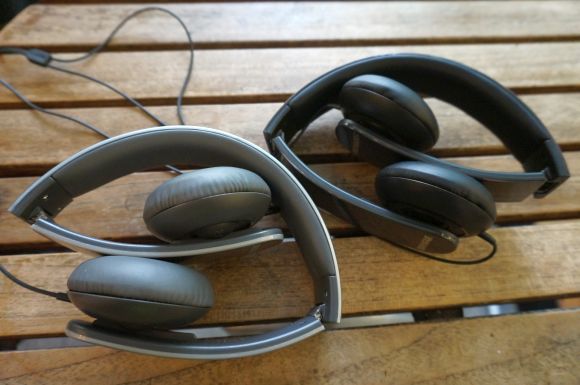
The Shure 144 (right) and Shure 145 shown here, folded. Would be nice for Shure to pack a carrying bag as well
Build quality
Both headsets feature roughly the same looks and build with a hard plastic band that features a brushed metal styling in a darker shade for the SRH 144 and a lighter, shinier one for the SRH 145. The inner part of the band is lined with padded PVC leather which makes for a pretty comfortable wear in general.
The headphones are also built with portability in mind and are foldable to make it easier to store in transit, but long haired folks beware, you might find yourself a few strands of hair lighter as the hinges seem to trap hair very easily. Otherwise, the headsets easily fold to about half its size for storage. It’s a pity that Shure didn’t include a carrying case for the headsets.
As a whole, both headsets do feel quite solid and the design is kept quite simple yet classy, befitting Shure’s style. In short, they look and feel good.
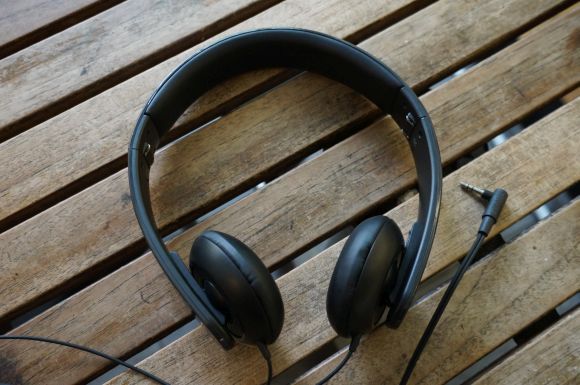
Shure SRH 144
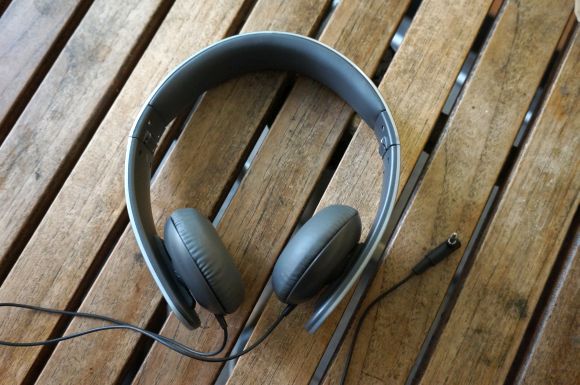
Shure SRH 145
Form factor
The main difference between the two sets are mostly due to the shape of the cups, with the Shure SRH 145 being of a more enclosed shape for better noise isolation and a more open shape for the Shure SRH 144 which is designed more with comfort in mind. The cans on both models have a bit of swivel to it too.
Of course, both of them have unique adjustable on-ear earcups in the sense that the cups can be slid up or down to get to your preferred level of adjustment; which is also better for the headset’s longevity as it does away with having to physically pull out the lower halves of the headset to get it to the right length.
Like many entry level headsets they feature a long 1.52m fixed cable which terminates in a nickel plated 3.5m stereo mini jack, which is still a bit of a surprise considering there are cheaper headsets out there have gold plated jacks. The cable isn’t anti-tangle either and doesn’t feature any controls of any kind so you are going to have to rely directly on your music device for that.
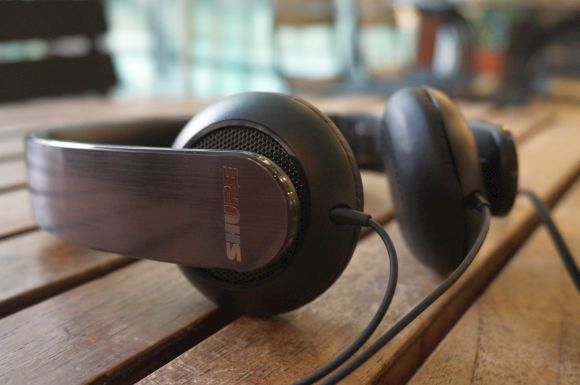
The semi-opened back design on the Shure SRH 144 allows for a more natural sound but it also means sound from the speakers can leak out
Noise isolation
Both headsets are of course, sporting some form of passive noise isolation in the form of the way their cans are made. In this case, the SRH 145 shines here as the enclosed cup design does isolate ambient noise more than the SRH 144, which only manages to cut down just a little bit of that outside noise.
Regardless, it’s still not as good as active noise cancellation but every bit counts.
Sound Quality
In terms of sound, both headsets offer a slightly different audio experience.
The Shure SRH 144 has very crispy highs with solid treble and warm, smooth mids, alongside rather punchy bass that seems to get a little bit harsh at higher volumes, so this might be great news for those who enjoy bass heavy genres like electronica or metal.
There’s a reasonable amount of sound leakage as well because of the cup design being more of a loose fit.
The Shure SRH 145 on the other hand handles highs and mids about the same as it’s sibling but it has a richer and more powerful bass, but doesn’t suffer from the same harshness as the SRH 144 at higher volumes. So if you’re music experience is all about the bass, the SRH 145 offers is the better bet.
Both headsets do however handle vocals pretty well.
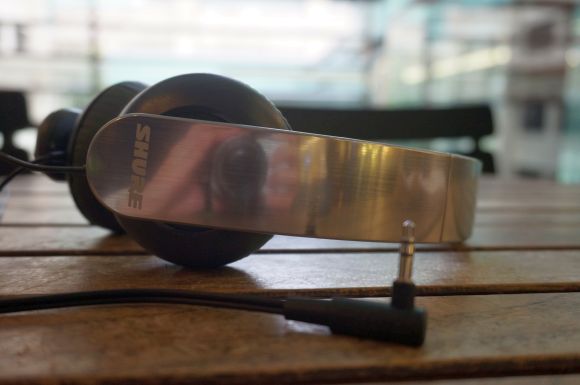
The Shure SRH 145 with its closed-back design offers better bass and passive noise isolation
Conclusion
So are you getting what you’re paying for?
Given the price point and the prestige of the brand they come from, we expected a bit better from Shure in terms of sound quality, but overall both models are not that bad.
They’re comfortable even with long term wear, has a decent degree of passive noise isolation (for on ear headsets) and they generally handle music quite well although the bass can be a little rough at higher volumes for the SRH 144. In terms of comfort I still prefer the SRH 144 more but if you do insist on cutting yourself off from the rest of the world, the SRH 145 might be the ticket for you.
Shure is a recognised name when it comes to professional grade audio equipment. Anything that carries the Shure brand is coveted by professionals who want only the best, I guess that’s where the problem lies with the SRH 144 and SRH 145. I expected a lot from the two headsets because they carry the Shure name. In isolation, the two headsets are decent, they’ve gotten a number of things right and the sound quality is reasonable but when you factor in the price point and arguably better, cheaper alternatives that are available, it’s difficult to make a case for the Shure.
More details on the Shure SRH 144, here.
More details on the Shure SRH 145, here.






